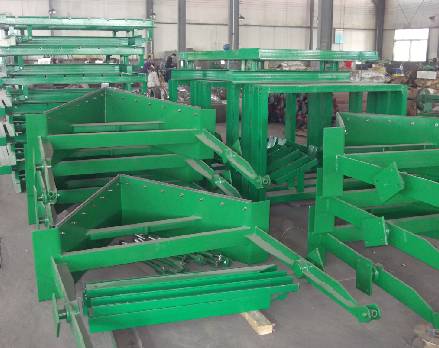 Afrikaans
Afrikaans  Albanian
Albanian  Amharic
Amharic  Arabic
Arabic  Armenian
Armenian  Azerbaijani
Azerbaijani  Basque
Basque  Belarusian
Belarusian  Bengali
Bengali  Bosnian
Bosnian  Bulgarian
Bulgarian  Catalan
Catalan  Cebuano
Cebuano  Corsican
Corsican  Croatian
Croatian  Czech
Czech  Danish
Danish  Dutch
Dutch  English
English  Esperanto
Esperanto  Estonian
Estonian  Finnish
Finnish  French
French  Frisian
Frisian  Galician
Galician  Georgian
Georgian  German
German  Greek
Greek  Gujarati
Gujarati  Haitian Creole
Haitian Creole  hausa
hausa  hawaiian
hawaiian  Hebrew
Hebrew  Hindi
Hindi  Miao
Miao  Hungarian
Hungarian  Icelandic
Icelandic  igbo
igbo  Indonesian
Indonesian  irish
irish  Italian
Italian  Japanese
Japanese  Javanese
Javanese  Kannada
Kannada  kazakh
kazakh  Khmer
Khmer  Rwandese
Rwandese  Korean
Korean  Kurdish
Kurdish  Kyrgyz
Kyrgyz  Lao
Lao  Latin
Latin  Latvian
Latvian  Lithuanian
Lithuanian  Luxembourgish
Luxembourgish  Macedonian
Macedonian  Malgashi
Malgashi  Malay
Malay  Malayalam
Malayalam  Maltese
Maltese  Maori
Maori  Marathi
Marathi  Mongolian
Mongolian  Myanmar
Myanmar  Nepali
Nepali  Norwegian
Norwegian  Norwegian
Norwegian  Occitan
Occitan  Pashto
Pashto  Persian
Persian  Polish
Polish  Portuguese
Portuguese  Punjabi
Punjabi  Romanian
Romanian  Russian
Russian  Samoan
Samoan  Scottish Gaelic
Scottish Gaelic  Serbian
Serbian  Sesotho
Sesotho  Shona
Shona  Sindhi
Sindhi  Sinhala
Sinhala  Slovak
Slovak  Slovenian
Slovenian  Somali
Somali  Spanish
Spanish  Sundanese
Sundanese  Swahili
Swahili  Swedish
Swedish  Tagalog
Tagalog  Tajik
Tajik  Tamil
Tamil  Tatar
Tatar  Telugu
Telugu  Thai
Thai  Turkish
Turkish  Turkmen
Turkmen  Ukrainian
Ukrainian  Urdu
Urdu  Uighur
Uighur  Uzbek
Uzbek  Vietnamese
Vietnamese  Welsh
Welsh  Bantu
Bantu  Yiddish
Yiddish  Yoruba
Yoruba  Zulu
Zulu Conveyor Idler Pricing and Market Insights for Effective Cost Management
Understanding Conveyor Idler Prices Key Factors and Considerations
Conveyor idlers are essential components of conveyor systems, designed to support and guide the conveyor belt as it moves material from one location to another. They are crucial for the efficient operation of various industries, including mining, manufacturing, and logistics. Given their importance, it is essential for businesses to understand the pricing of conveyor idlers, which can vary significantly based on several factors.
Factors Influencing Conveyor Idler Prices
1. Material and Design The materials used to manufacture conveyor idlers play a crucial role in their pricing. Idlers can be made from steel, rubber, or plastic, with steel being the most durable and typically more expensive. Furthermore, the design of the idler—whether it’s a standard design or custom-made—can also affect the price. Custom designs that meet specific operational or environmental requirements may come with a premium.
2. Size and Capacity Conveyor idlers are available in various sizes and load capacities to accommodate different types of conveyor systems. Larger idlers that can support greater loads and longer spans tend to be priced higher due to the increased material costs and engineering involved in their production.
3. Manufacturing Standards and Certifications Idlers that meet specific industry standards or have certifications for safety and quality control may come at a higher price. This investment can be worthwhile, as it ensures the reliability and longevity of the idlers, ultimately reducing maintenance and replacement costs in the long run.
4. Brand Reputation The manufacturer’s reputation in the market can significantly influence the price. Well-established brands with proven track records often command higher prices due to their commitment to quality and reliability. Investing in reputable brands may mean higher upfront costs but can lead to better performance and durability.
conveyor idler price

5. Quantity and Bulk Discounts Pricing strategies can vary widely, especially when buying in bulk. Many manufacturers and suppliers offer discounts for larger orders, which can substantially reduce the per-unit cost of conveyor idlers. Companies planning to replace or build a new conveyor system should consider purchasing in bulk to maximize their savings.
6. Market Trends and Demand Like any commodity, the price of conveyor idlers can fluctuate based on market demand and trends. Economic conditions, such as supply chain disruptions or increased construction and mining activity, can lead to changes in idler prices. Keeping an eye on industry trends can help businesses time their purchases more effectively.
Where to Buy Conveyor Idlers
Businesses have multiple options for sourcing conveyor idlers. They can purchase directly from manufacturers, through distributors, or online marketplaces. Each option presents different advantages and may affect pricing. Online marketplaces may offer competitive prices, while dealing directly with manufacturers can provide customization options and the potential for better bulk pricing.
Conclusion
Investing in conveyor idlers is a critical decision for any operation reliant on conveyor systems. Understanding the factors influencing conveyor idler prices can help businesses make informed purchasing decisions, ensuring that they choose idlers that offer the best value for their needs. By considering factors such as material, size, brand, and market demand, businesses can navigate the landscape of conveyor idler prices and select the most effective solutions for their operational requirements. Ultimately, the right idler purchase will contribute to the overall efficiency and productivity of conveyor systems, driving success in their respective industries.
-
Revolutionizing Conveyor Reliability with Advanced Rubber Lagging PulleysNewsJul.22,2025
-
Powering Precision and Durability with Expert Manufacturers of Conveyor ComponentsNewsJul.22,2025
-
Optimizing Conveyor Systems with Advanced Conveyor AccessoriesNewsJul.22,2025
-
Maximize Conveyor Efficiency with Quality Conveyor Idler PulleysNewsJul.22,2025
-
Future-Proof Your Conveyor System with High-Performance Polyurethane RollerNewsJul.22,2025
-
Driving Efficiency Forward with Quality Idlers and RollersNewsJul.22,2025





























